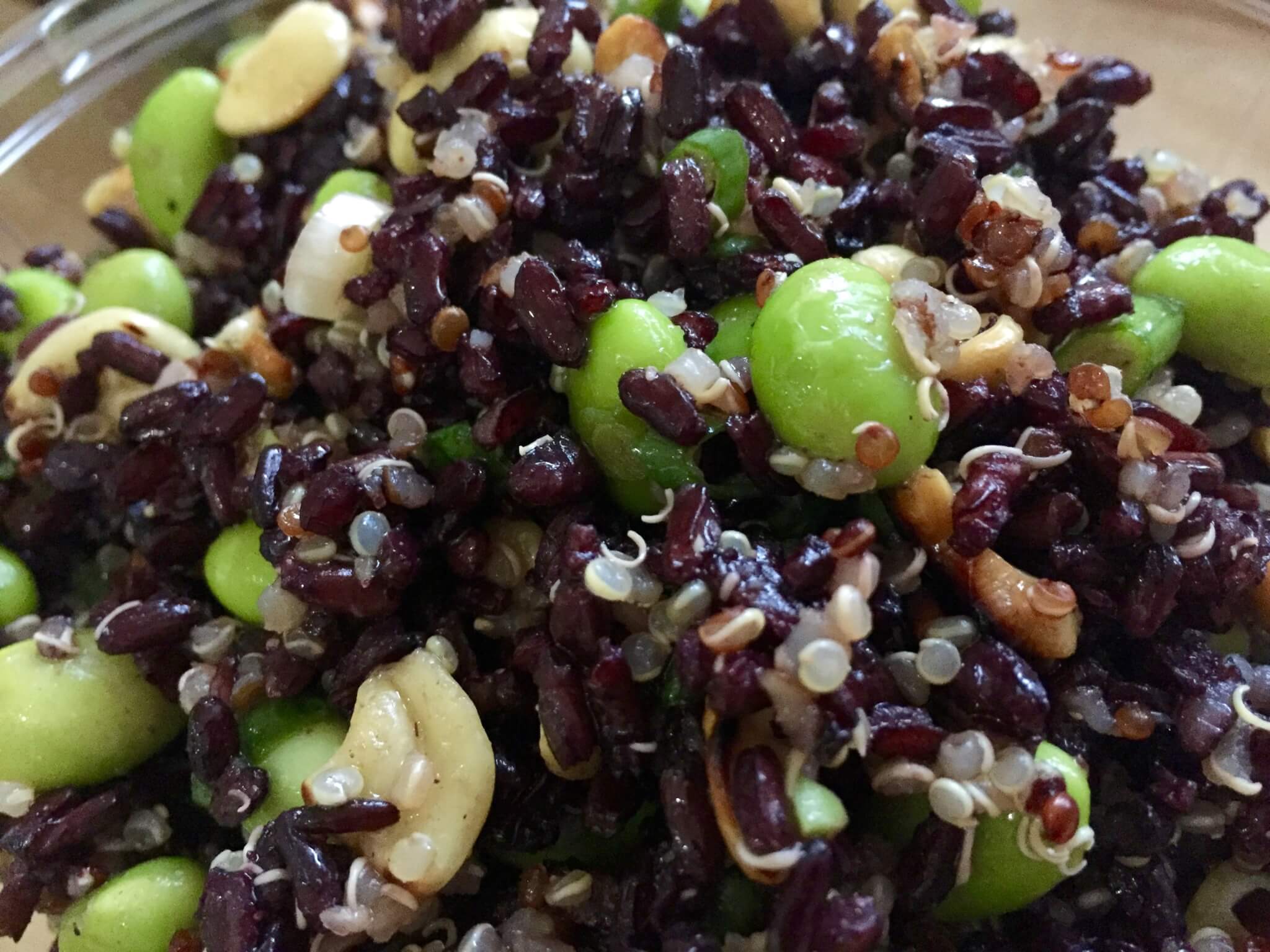
A Quick Lesson on Protein
A Quick Lesson on Protein
If you’re vegan – or even thinking about going vegan, you’ve no doubt encountered “the question”. You know, the one about protein, as in, where will you get yours? Maybe you’re the one asking the question as you consider this lifestyle change. Here’s a few things you might be interested to know about protein.
Proteins are part of every cell, tissue, and organ in our bodies.These proteins are constantly being broken down and replaced in our bodies. Proteins are made up of amino acids: Think of amino acids as the building blocks. In order to build, we need the raw materials. We get these raw materials, or amino acids, from the food we eat. When we eat, the protein in food is digested into amino acids that are later used to replace the proteins in our bodies. There are 20 different amino acids that join together to make all types of protein. Some of these amino acids can’t be made by our bodies, so these are known as essential amino acids. It’s essential that our diet provide these nine amino acids.
Complete or Incomplete – What Does It Mean?
In the diet, protein sources are labeled according to how many of the essential amino acids they provide:
A complete protein source is one that provides all of the nine essential amino acids. Animal-based foods; for example, meat, poultry, fish, milk, eggs, and cheese are considered complete protein sources. That’s why when we choose to eliminate these foods, people wonder where the protein will come from.
An incomplete protein source is one that is low in one or more of the essential amino acids. Sometimes a reference is made to a limiting amino acid, or one that is not present. Just because a protein is incomplete, doesn’t mean it doesn’t count. There was a time when scientists and nutritionists believed that incomplete proteins needed to be carefully combined in the same meal to ensure the complete protein was formed. Humbug! Today we know that our bodies store amino acids for several days so as long as you eat a varied diet, you’ll pick up the other essential amino acids to complete the protein needs.
How much protein do I need?
 In the United States today, we seem to be obsessed with protein. Our protein needs are far less than many people think and most of us, including vegetarians and vegans, are doing just fine.
In the United States today, we seem to be obsessed with protein. Our protein needs are far less than many people think and most of us, including vegetarians and vegans, are doing just fine.
In general, it’s recommended that 10–35% of your daily calories come from protein. The average person can multiply body weight in pounds by 0.36 to determine the number of grams per day to meet the RDA of protein. Fifty-six grams for the average man and 46 for the average woman are good benchmarks to consider.
Sources of Plant-Based Protein
Beans & Legumes
Contain a more complete set of amino acids than other plant-based food and they are high in iron, B vitamins and fiber. Try substituting beans in recipes that call for meat. Lentils are among the legumes with the highest protein content, 18 grams in one cup. On average, most beans contain about 9-15 grams per cup.
Grains
Whole grains are an excellent source of nutrition, as they contain essential enzymes, iron, dietary fiber, vitamin E, and the B-complex vitamins. Because the body absorbs grain slowly, it provides sustained and high quality energy. Try quinoa, a complete protein source, and super easy to make. It contains about 9 grams per half cup serving.
Green Vegetables:
Nutritionally, greens are very high in protein, calcium, magnesium, iron, potassium, phosphorous, zinc, and vitamins A, C, E and K. They are crammed with fiber, folic acid, chlorophyll and many other micro-nutrients and phyto-chemicals (healthy plant chemicals). Simply stir-fry up or steam some broccoli, kale, bok choy, or cabbage.
Sea Vegetables:
As this planet’s singularly most nutritious food, sea vegetables contain protein and all of the minerals needed for health. With 10 to 20 times the minerals of land plants, plus the added punch of a range of vitamins, the addition of sea vegetables to your diet will help meet your nutritional needs. Spirulina, for example, contains 8 grams of protein in 2 tablespoons: Add it to your morning smoothie for an extra boost.
Soy:
Soybeans contain all essential amino acids. One serving has roughly 20 grams of protein. Traditionally, people ate baby soybeans, known as edamame, or took time to ferment the soybeans and made tempeh, miso and tamari for easy digestibility. Soy is a topic much debated today and there are some important considerations about this particular source of protein; are you eating fermented soy? Are you eating organic soy? Are you eating too much soy? And are you eating processed foods with soy ingredients?
Nuts and Seeds:
Nuts and seeds are also a great source of protein. A 1/4 cup serving of almonds provides 8 grams of protein, 1/4 cup of cashews provides 5 grams of protein and 1/4 cup of sunflower seeds provides 6 grams of protein. Try hemp seeds sprinkled in salads or in smoothies: They contain 10 grams per 3 tablespoons. In addition to being a source of plant protein, regular consumption of nuts also helps to lower blood cholesterol.
Vegetables, Fruits and Other Sources: While the foods above provide a powerful source of protein, realize also, that all fruits and vegetables also contain varying amounts. Some other sources are; nutritional yeast, an inactive form of yeast used to flavor many foods you make at home, provides 8 grams per 1 1/2 tablespoon; whole grain pasta can provide 8-10 grams per cup; goji berries, found most often in dried form, are a powerful source of protein, providing all essential amino acids.






